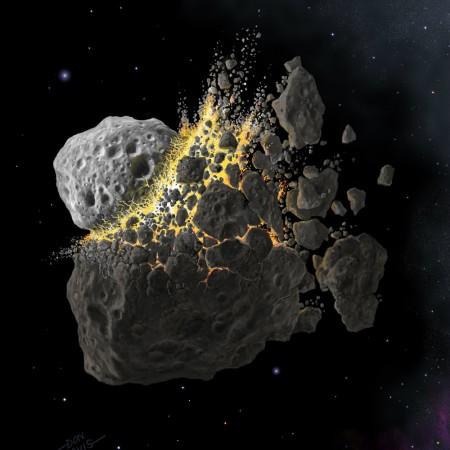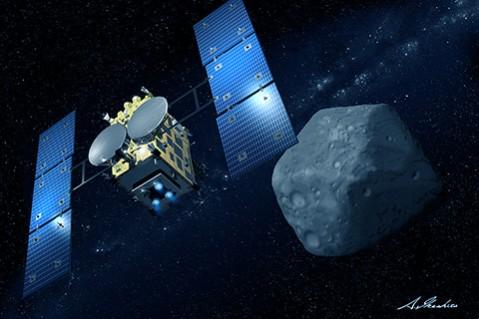
Five to six minor planets had a massive collision and crumbled down to rocks and formed the asteroids in the Solar System. This event is believed to have happened in the early years of the Solar System's birth and planet formation.
A new study led by astronomers from the University of Florida has found that at least 85 percent of all asteroids seen in the inner asteroid belt between Mars and Jupiter came to be because of planetary collisions that disintegrated them and ground them down to rocks. This belt is the main source of meteorites falling into Earth.
According to the team of researchers, led by Stanley Dermott, lead author and a theoretical astronomer at the University of Florida, this discovery is important because it leads to a better understanding of the processes and materials that went into the formation of rocky planets like Earth, notes a release put out by the university.
"These large bodies whiz by the Earth, so of course we're very concerned about how many of these there are and what types of material are in them," said Dermott,
"If ever one of these comes towards the earth, and we want to deflect it, we need to know what its nature is."
Dermott's team were able to demonstrate that even the type of orbit that an asteroid has depends on its size, and this finding suggests that the differences in the types of meteorites found on Earth seem that way because of the evolutionary changes that happened on the inside of a few large, minor planets that likely existed in the formative years of the Solar System, more than four billion years ago.
"I wouldn't be surprised if we eventually trace the origins of all asteroids in the main asteroid belt, not just those in the inner belt, to a small number of known parent bodies," Dermott said.

Before the Solar System, all the matter that is currently in this closed system was not much more than a massive cloud of dust and gas, reports The Washington Post. As temperatures dropped, the very centre of the cloud collapsed on to itself, forming a star that became the Sun. The spinning disc of cloud-like matter began to coalesce into gas giants, icy moons, and rocky planets, slowly over time becoming the Solar System as it is known today.
The early days of the Solar System was a rough, rather violent place. Astronomers actually believed that the asteroid belt is just remaining material that did not make it into becoming a full-fledged planet, but this new research has put that speculation to rest, for now.
Between Mars and Jupiter lies the asteroid belt that contains most of the remaining fragments of the rocks that could not make it into planets. There is an immense amount of gravitational force that Jupiter puts out in this region, notes the report, which would not have allowed anything to form here that was bigger than one-tenth the size of Earth. The rocks smashed into each other and simply dispersed in the region, now there are about 200,000 asteroids in the belt.
That is also one of the reasons why all the small, rocky planets are in the inner Solar System, with the massive gas giants are all beyond Mars, say the researchers.

















